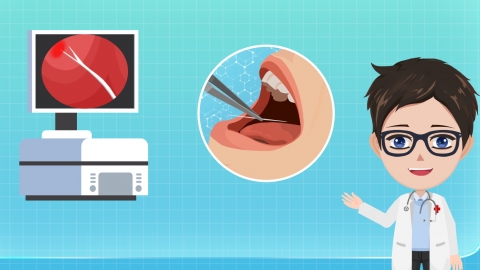What should I do if a fish bone is stuck in my throat?
Generally speaking, the throat refers to the pharynx. If a fish bone becomes lodged in the throat, it can be managed by stopping eating, gently coughing, inducing vomiting, using tweezers, receiving professional medical treatment, etc. If discomfort persists, prompt medical attention at a hospital is recommended. Detailed explanations are as follows:

1. Stop Eating
If a fish bone enters the throat and causes irritation, eating and drinking should be stopped immediately. Consuming food or liquids before the fish bone is removed may push it deeper, potentially damaging the pharyngeal mucosa.
2. Gently Cough
Stay calm and try gently coughing. Fish bones that are shallow and small in size can usually be expelled by coughing. However, if the fish bone is large, coughing should be avoided as much as possible to prevent pharyngeal mucosal congestion.
3. Induce Vomiting
If the fish bone cannot be coughed out, inducing vomiting may help expel it, especially if the bone is small. However, care should be taken with the force of vomiting to avoid damaging the pharyngeal mucosa.
4. Use Tweezers
If the fish bone is visible, it can be directly removed using tweezers. If visibility is unclear, someone else can assist to ensure better manipulation.
5. Professional Medical Treatment
If the fish bone is deeply lodged and cannot be removed by oneself, timely professional treatment should be sought. For example, under medical guidance, a pharyngoscope can be used to remove the fish bone and assess any damage to the throat.
It should be noted that appropriate measures should be taken when a fish bone is lodged in the throat to avoid improper handling that may cause discomfort. Additionally, speaking should be minimized to prevent the fish bone from moving deeper.







